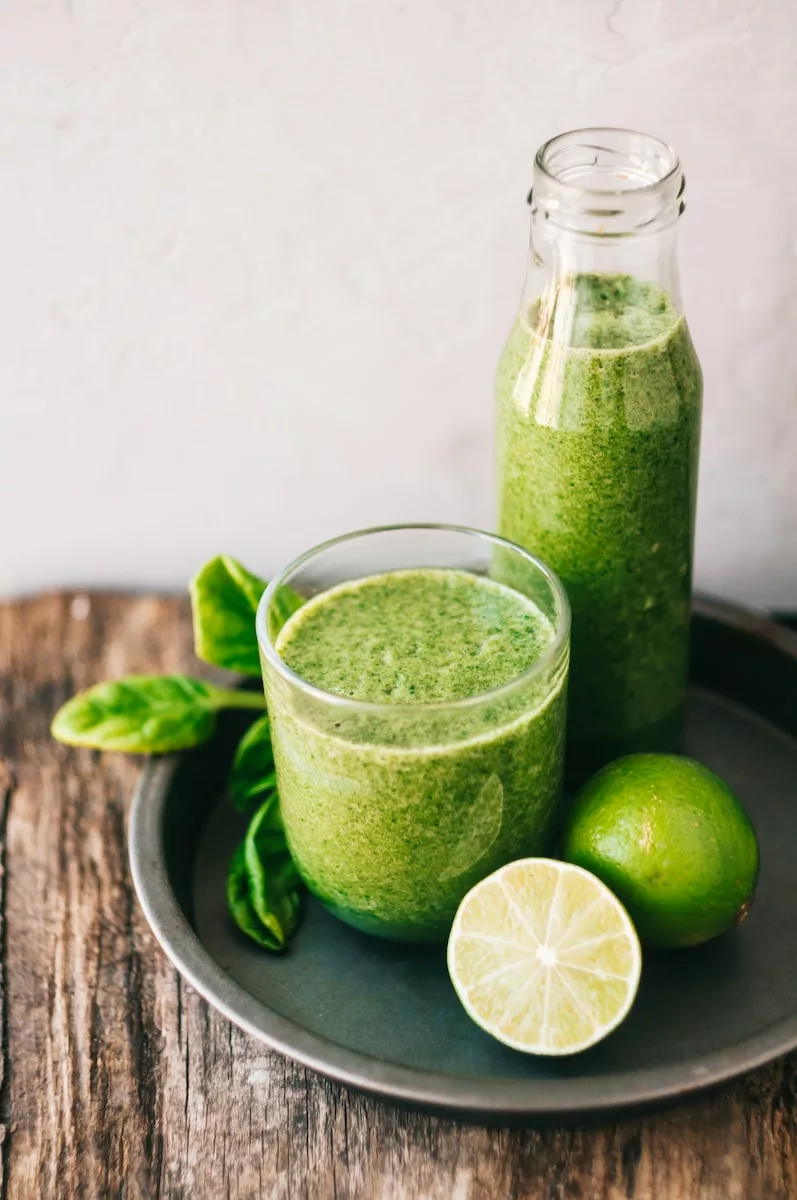In the course of his career, Dr. Gundry has come across many misconceptions about nutrition, and a lot of these misconceptions are related to fruit. As you may already know, while there are some seasonal fruits that are included in the Plant Paradox “yes” list as a special treat, the general consensus is that you should try to minimize your consumption of fructose. This is because your body processes fructose in the same way as sugar, which means that fruit is essentially nature’s candy.
Now, you might be thinking, “Okay – fructose might be bad, but fruit also contains some healthy things, right? Like fiber, nutrients, and vitamins.” Absolutely! You are correct. That’s why it’s even more puzzling that some people have chosen to follow the juicing trend, where they separate the sugary water from the fruit and throw away all the pulp, which is the “good stuff”. In this video, Dr. Gundry addresses the myth of juicing once and for all.
And don’t worry – even if you have invested in an expensive juice machine, Dr. Gundry has a useful trick for you to make the most of it (hint: it’s not by juicing celery).
So whether you need information to share with your friends who are obsessed with juicing, or you simply want to educate yourself, be sure to watch this video from Steven Gundry MD for the most up-to-date health information!
Gundry MD’s YouTube Channel: https://bit.ly/2YVaIi0
If you enjoyed this video, you might also be interested in:
- Ketogenic Diet Myths
- Revealed: 5 nutrition lies you’ve DEFINITELY heard
- Want to gain muscle? Ditch the protein shake, and do THIS
- Top Health Myths Hey there! So, have you heard about the latest trend in nutrition – juicing? Well, in this article, Dr. Gundry reveals the truth about juicing and debunks some of the misconceptions surrounding it. We all know that fruit is packed with fiber, nutrients, and vitamins, but it also contains fructose, which is processed by your body in the same way as sugar. This is why some people have chosen to follow the juicing trend, thinking they are getting all the healthy benefits without the sugar. But here’s the catch – juicing involves separating the sugary water and throwing away all the pulp, which is where the fiber and the “good stuff” resides. Dr. Gundry tackles this juicing myth head-on, and he even has a trick for using your expensive juice machine to your advantage. Whether you want to inform yourself or impress your juice-crazed friend with some new knowledge, watching this video will give you the most updated health information straight from Dr. Gundry himself. So, let’s dive into the truth about juicing and learn why it might not be as beneficial as it seems.
The Juicing Craze
Growing popularity of juice bars
Juice bars have become increasingly popular over the past decade, with many popping up in various locations. It’s easy to get caught up in the juicing hype, with claims that juicing provides more nutrients than simply eating fruits and vegetables. People are drawn to juice bars for their convenience and the perception that they are making a healthy choice. However, it’s important to examine the validity of these claims and understand the potential drawbacks of juicing.
Claims about juicing benefits
Proponents of juicing often claim that it can improve digestive health, aid in weight loss, and even help flush out toxins from the body. Juice cleanses, in particular, have gained popularity as a way to lose weight and detoxify the body. However, it is important to separate fact from fiction when it comes to these claims. While there may be some truth to the idea that juicing provides a concentrated source of nutrients, it is essential to consider the potential downsides of this trend.
cleanses and weight loss
Many people turn to juice cleanses as a way to kickstart their weight loss journey or detoxify their bodies. However, juice cleanses are often a waste of time and money. The primary issue with juice cleanses is that the drinks are primarily made up of fruit juice, which is loaded with sugar. Even if the juice is advertised as a green juice, it can still contain a significant amount of sugar. For example, one of the most popular green juices on the market contains a staggering 53 grams of sugar per serving, more than a can of soda or a slice of apple pie with ice cream. Additionally, when juicing, the pulp, which contains important fiber, is often discarded. Skipping on fiber-rich foods can negatively impact digestion and leave you feeling less satisfied.
The Truth About Juicing
High sugar content in fruit juice
Fruit juice, whether consumed alone or in a juice blend, is known for its high sugar content. Even though fruits contain fiber, nutrients, and vitamins, the concentration of sugar in fruit juice can be problematic. The body processes fructose, the sugar found in fruit, in the same way as other forms of sugar. This means that despite the potential health benefits of fruit, excessive consumption of fruit juice can lead to an increase in sugar intake, which can have negative effects on overall health and weight management.
Importance of fiber in the diet
Fiber plays a crucial role in maintaining a healthy digestive system and overall well-being. Unfortunately, juicing often involves extracting the juice from fruits and vegetables and discarding the pulp, which is where most of the fiber is found. Choosing whole fruits and vegetables instead of consuming them in juice form allows for the intake of essential fiber. Fiber-rich foods keep the gut healthy and promote proper digestion, helping to prevent constipation and maintain a feeling of fullness.
Throwing away the pulp
One of the downsides of traditional juicing methods is the disposal of pulp, which contains valuable fiber and nutrients. Unfortunately, most people tend to discard the pulp and focus solely on the juice itself. By throwing away the pulp, they miss out on the benefits that fiber provides. The pulp can be incorporated into various recipes and used to add texture and nutrition to dishes. By finding creative ways to incorporate pulp into meals, you can maximize the nutritional value of the fruits and vegetables you’re juicing.
The problem with celery juice
Celery juice has gained a lot of attention in recent years, with claims that it has numerous health benefits. While celery does offer some nutritional value, including fiber, many people choose to juice it, discarding the fiber-rich pulp. This approach can be problematic because celery is actually an excellent source of fiber. Instead of juicing celery, consider incorporating it into other recipes, such as guacamole, where you can benefit from its nutrients while also enjoying the healthy fats from avocado.
Alternative ways to consume fruits
While juicing may seem like a convenient way to consume fruits, it is not the only option. Whole fruits offer the advantage of containing all their natural fiber, as well as other beneficial compounds. Chewing fruits not only allows for better digestion but also provides the satisfaction of eating a whole food. Consider incorporating fruits into smoothies or enjoying them as a snack to ensure you receive the full nutritional benefits.

Juicing and Detoxification
Understanding the body’s detox system
The body has a built-in detoxification system that primarily involves the liver. The liver is responsible for filtering toxins and waste products from the blood, ensuring that they are excreted from the body. This natural detox system is highly efficient and usually does not require any additional measures to function properly. By eating a healthy diet and avoiding harmful substances, you support your liver’s natural detoxification processes.
The role of the liver
The liver plays a vital role in the body’s detoxification process. It filters out toxins and waste products, metabolizes drugs and chemicals, and produces bile, which aids in digestion. By supporting liver health through a balanced diet and lifestyle, you can optimize its detoxification functions. It is important to note that the liver does not need any specific juice cleanse or detox program to function correctly.
Eating healthy foods as a detox
The most effective way to support your body’s natural detoxification processes is by consuming a balanced diet that includes a variety of nutrient-rich foods. Focus on eating whole, unprocessed foods such as fruits, vegetables, lean proteins, and whole grains. These foods provide the necessary nutrients and antioxidants to support optimal liver function. Avoiding processed foods, added sugars, and excessive alcohol consumption is also crucial for liver health.
The myth of trendy toxins
The idea of trendy toxins that need to be flushed out of the body is not supported by scientific evidence. The body’s natural detoxification processes, primarily carried out by the liver, are sufficient to eliminate toxins. Consuming a healthy diet and avoiding harmful substances is a more effective way to support the body’s detoxification than relying on juice cleanses or trendy detox programs.
The 3-day cleanse as a kickstart
If you feel the need for a kickstart to healthier eating habits, a 3-day cleanse can be an option. However, it is important to choose a cleanse that provides sufficient calories and nutrients to sustain your body’s needs. Dr. Gundry’s 3-day cleanse, outlined in his book, offers a plan that includes delicious and nutritious foods while supporting overall health. It is crucial to remember that this cleanse should not replace a healthy, balanced diet in the long term but may serve as a temporary reset.

Reverse Juicing
Explaining the concept of reverse juicing
Reverse juicing is a method that allows you to reap the benefits of fruits and vegetables while minimizing sugar intake. Instead of extracting the juice and discarding the pulp, reverse juicing involves keeping the pulp and discarding the juice. This approach reduces the sugar content of the final product and preserves valuable fiber and nutrients.
Benefits of keeping the pulp
By keeping the pulp, you retain the fiber content of the fruits and vegetables. Fiber plays a crucial role in digestive health, keeping you fuller for longer, aiding in bowel regularity, and contributing to overall well-being. The pulp also contains important vitamins and minerals that may be lost during the juicing process.
Uses for fruit pulp
The pulp leftover from the reverse juicing process can be utilized in various ways. It can be added to yogurt to enhance the flavor and boost the nutrient content. Blending the pulp into smoothies can add texture and provide additional dietary fiber. Additionally, the pulp can be incorporated into baked goods, such as muffins, to increase their nutritional value.
Incorporating pulp into yogurt, smoothies, and baked goods
Adding fruit pulp to yogurt is a simple way to enjoy the nutritional benefits of fruits while creating a delicious and satisfying snack. Blending the pulp into smoothies can provide added texture and fiber without the excessive sugar content of traditional juices. Finally, incorporating pulp into baked goods, such as muffins, can elevate their nutritional value and offer a convenient way to consume fruits.

Smoothies vs. Juices
Retaining fiber in smoothies
One of the key differences between smoothies and juices is the retention of fiber in smoothies. When making a smoothie, the entire fruit or vegetable is blended, including the skin and pulp, ensuring that the fiber is not lost. This preservation of fiber is crucial for maintaining healthy digestion and promoting feelings of fullness.
Importance of fiber for health
Fiber plays a vital role in supporting overall health. It aids in digestion, helps regulate blood sugar levels, reduces the risk of heart disease, and promotes a healthy weight. By consuming smoothies that retain fiber, you can reap these benefits and ensure that your diet includes an adequate amount of dietary fiber.
Plant Paradox compliant smoothies
Dr. Gundry’s Plant Paradox program focuses on minimizing the consumption of lectins, which are proteins found in many plant-based foods. When creating smoothies, it is essential to choose ingredients that are compliant with the Plant Paradox guidelines to optimize health benefits. This involves selecting fruits and vegetables that are known to be low in lectins and combining them in a balanced and nutritious way.
Benefits of reverse juicing over traditional juicing
Reverse juicing offers several advantages over traditional juicing methods. By discarding the juice and keeping the pulp, you can significantly reduce your sugar intake while still enjoying the nutritional benefits of fruits and vegetables. Retaining the fiber and nutrients found in the pulp is essential for optimizing digestive health and overall well-being.

The Advantages of Reverse Juicing
Reduced sugar content
One of the most significant advantages of reverse juicing is the reduced sugar content in the final product. By discarding the juice and keeping the pulp, you eliminate a significant portion of the sugar found in fruits and vegetables. This can be particularly beneficial for those looking to reduce their overall sugar intake, manage their weight, or improve their blood sugar control.
Retained nutrients and fiber
By keeping the pulp, you retain the vital nutrients and fiber found in fruits and vegetables. Nutrients, such as vitamins and minerals, are essential for various bodily functions and overall health. Fiber plays a crucial role in digestion, heart health, and maintaining a healthy weight. By reverse juicing, you can ensure that you are getting the full nutritional benefits of the produce you are juicing.
Enjoying the taste of fruit without the negative effects
Fruit is often considered a delicious and natural source of sweetness. However, it is also high in sugar, which can have negative health effects when consumed in excess. Reverse juicing allows you to enjoy the taste of fruit without the negative effects of excessive sugar intake. By keeping the pulp and discarding the juice, you can satisfy your cravings for fruity flavors while maintaining a balanced and healthy diet.
Dr. Gundry’s formula for fruit benefits without sugar
Dr. Gundry developed a formula that allows individuals to enjoy the benefits of fruits without consuming excessive amounts of sugar. By utilizing the reverse juicing method and incorporating pulp into various recipes, it is possible to maximize the nutritional benefits of fruits while minimizing sugar intake. This approach allows you to enjoy the taste and nutrients of fruit without the potentially harmful effects of excessive sugar consumption.
Conclusion
Making informed choices about juicing is essential for maintaining a healthy diet and maximizing the nutritional benefits of fruits and vegetables. While juicing can be a convenient way to consume produce, it is important to consider the potential drawbacks, such as high sugar content and the loss of valuable fiber. Reverse juicing offers a solution by retaining the pulp and reducing the sugar content of the final product. By prioritizing fiber in your diet and exploring alternative methods of fruit consumption, such as smoothies, you can enjoy the benefits of fruits while maintaining a healthy lifestyle. Consider incorporating reverse juicing into your routine and take advantage of the valuable insights provided by Dr. Gundry to optimize your health and well-being.

